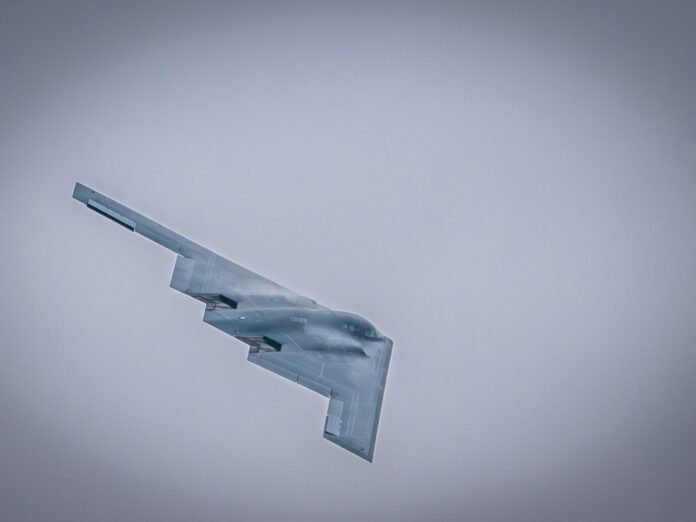US President Donald Trump claims Iran’s key nuclear enrichment facilities ‘totally obliterated’ after bombing of three nuclear sites.
The United States struck three key nuclear sites in Iran early on Sunday, injecting itself into Israel’s war with Iran in a sophisticated mission and prompting fears of military escalation in the Middle East amid Israel’s brutal onslaught of Gaza.
In a televised address early on Sunday, US President Donald Trump justified the strikes, saying they were aimed at stopping “the nuclear threat” posed by Iran. Natanz, Isfahan, and Fordow sites, which are involved in the production or storage of enriched uranium, were targeted.
“Tonight, I can report to the world that the strikes were a spectacular military success. Iran’s key nuclear enrichment facilities have been completely and totally obliterated,” he said, warning Tehran against retaliation.
Israel and Trump claim that Iran can use the enriched uranium to make atomic warheads. But Iran insists its nuclear programme is solely for civilian purposes. The United Nations nuclear watchdog, the International Atomic Energy Agency (IAEA), has also rejected Israeli claims that Iran was on the verge of making nuclear weapons.
Condemning the strikes, which US officials said were covertly coordinated, Iranian Foreign Minister Abbas Araghchi said that the time for diplomacy had passed and that his country had the right to defend itself.
“The warmongering, a lawless administration in Washington, is solely and fully responsible for the dangerous consequences and far-reaching implications of its act of aggression,” he said at a news conference in Istanbul, Turkiye.
Iranian officials, meanwhile, have not detailed the extent of the damage and have attempted to downplay the significance of the hits. Speaking on state TV, Hassan Abedini, the deputy political director of Iran’s state broadcaster, said the three nuclear sites had been evacuated “a while ago” and that they “didn’t suffer a major blow because the materials had already been taken out”.
Here’s what to know about the nuclear plants hit and what the attacks mean for Iran:
Independent impact assessment of the US strikes at Fordow remains unclear.
Defence Secretary Hegseth on Sunday said the US’s “initial assessment is that all our precision munitions struck where we wanted them to strike and achieved the desired effect”, citing particular damage at Fordow.
An Iranian lawmaker told media that the site suffered superficial damage. Israeli strikes on the plant last week only caused “limited, if any, damage” at the underground plant, according to IAEA boss Rafael Grossi.
The extent of damage at Natanz is also unclear following Sunday’s strike. Earlier Israeli attacks “completely destroyed” the above-ground plant, and caused centrifuges in the underground parts of the uranium plant to be “severely damaged if not destroyed altogether”, even though it was not directly hit, Grossi told reporters last week.
Which facilities were hit?
Meanwhile, the IAEA said on Sunday that six buildings at Isfahan suffered damage following the US attacks, including a workshop handling contaminated equipment. Earlier Israeli strikes had damaged four buildings on the site, the agency had reported, including the plant’s central chemical laboratory.
Initial reports from Iran and neighbouring Gulf countries such as Kuwait further indicate that there is no significant leakage of radioactive material from any of the plants. That could suggest that Iranian officials might have moved the stockpiles of enriched uranium out of the facilities targeted by the US, analysts say.
The IAEA also said the radiation levels near targeted sites had not increased.
“Following attacks on three nuclear sites in Iran – including Fordow – the IAEA can confirm that no increase in off-site radiation levels has been reported as of this time,” the agency said in a social media post on Sunday.
Trita Parsi, executive vice president of the Quincy Institute for Responsible Statecraft, says it is likely Iran had taken precautionary actions ahead of the US attacks.
“It appears that they already had gotten an advanced warning,” he told media.
“They understood that he [Trump] was buying time while moving military assets in order to actually strike. So, I think for some time they have moved those assets – where they are is unclear at this point.”
The impact of the strikes on Iran’s overall nuclear programme is yet unknown.
However, analysts say there was no clear evidence that Iran had advanced so far as to be able to reach weaponisation in its nuclear programme in the first place.
Parsi said Iran’s most valuable nuclear asset is its stockpile of enriched uranium.
“As long as they continue to have that, they still actually have very much a nuclear programme that still could be weaponised,” he added.
“And I think we are going to start to hear from the Israelis in rather short order, that this was not the type of successful strike Trump has claimed, but they are going to start making the case that there needs to be a more ongoing bombing campaign against Iran.”

